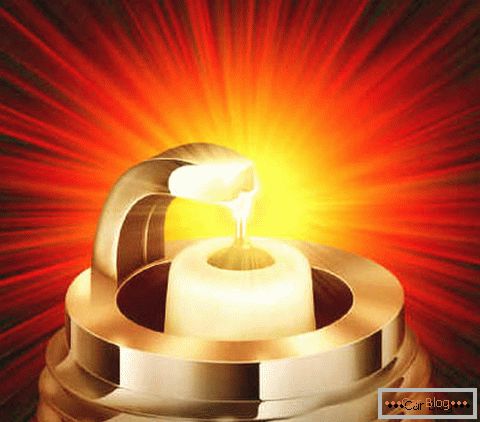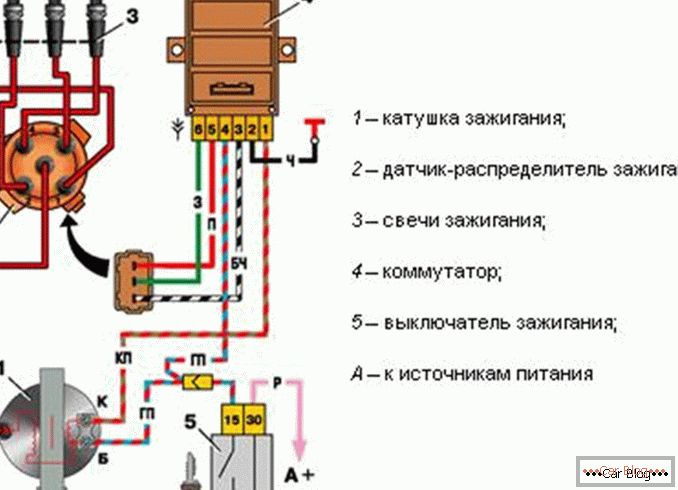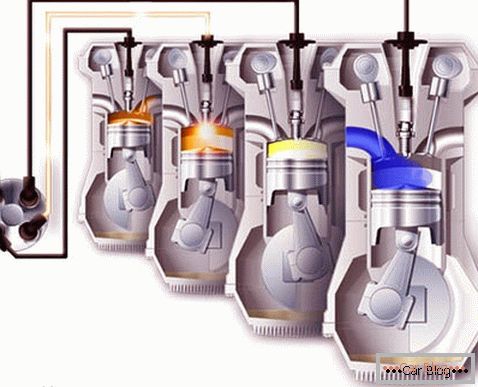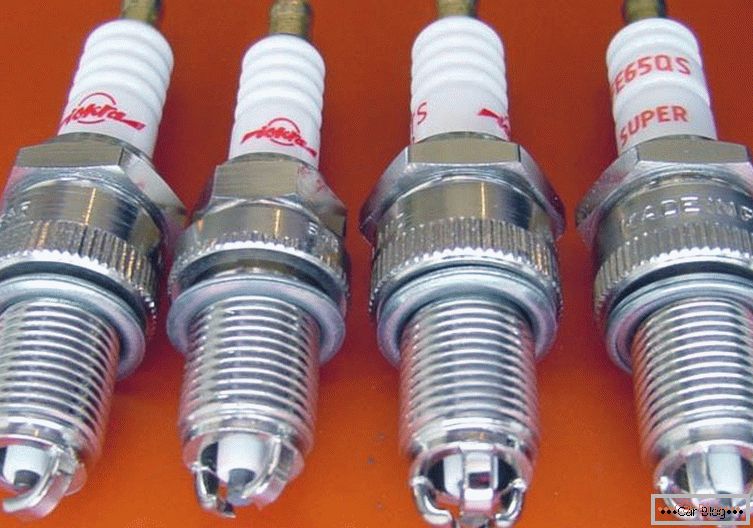Types of ignition systems
Thanks to the car’s ignition system, at a certain moment of engine operation, a spark discharge is applied to the spark plugs. This scheme of the ignition system is used in gasoline engines. In diesel engines, the ignition system works as follows; at the moment of compression, fuel is injected. There are some brands of American cars in which the ignition system, or rather its impulses, are fed directly to the control unit of the submersible fuel pump.

All existing ignition systems are divided into three types:
- A contact circuit in which impulses are generated directly during operation to break contacts;
- Contactless circuit, where using a transistor device (switch) creates control pulses. The switchboard is often also called a pulse generator.
- Microprocessor circuit in which the electronic device controls the moment of ignition.
In two-stroke engines without an external power source, a magneto-type ignition system is used. The principle of "magneto" is to create an EMF, at the time of rotation in the ignition coil of a permanent magnet on the falling edge of the pulse.
All described types of ignition systems differ only in the method of creating a control pulse.
Ignition system device
The figure shows the ignition system, which is used in gasoline vehicles.

Let us consider in more detail the device and the scheme of the car ignition system.
Main elements:
- power source (battery and car generator);
- energy storage;
- ignition switch;
- energy storage control unit (microprocessor control unit, chopper, transistor switch);
- power distribution unit in cylinders (electronic control unit, mechanical distributor);
- spark plug;
- high voltage wires.
The power source for the ignition system is the battery directly at the time of starting the engine, and the generator while the engine is running.
Recommended article: Vehicle clearance is a very important quantity.The drive is used to accumulate and convert a sufficient amount of energy, which is used to create an electrical discharge in the electrodes of the spark plug. A modern car ignition system can use a capacitive or inductive drive.
Inductive drive is an ignition coil (autotransformer), the primary winding of which is connected to the positive pole, and the negative pole is connected through the break device. In the course of the rupture device operation, let us take, for example, ignition cams, a self-induction voltage is induced in the primary winding. At this time, in the secondary winding, an increased voltage is created, which is necessary for breakdown on the air gap plug.

Capacitive storage is represented as a container that is charged with overvoltage. At the right moment gives all the energy to the spark plug.
The energy storage control unit is designed to determine the initial moment of energy storage, as well as the moment of its transfer to the spark plug.
The ignition switch is an electrical or mechanical contact block for supplying the ignition system with voltage. The ignition switch is known to many motorists as the "ignition switch". Two functions are assigned to it: supply voltage directly to the starter retractor relay and supply voltage to the vehicle electrical system.
The distribution device in cylinders is used to supply at a certain moment of energy to the spark plugs from the drive. This element of the engine ignition system consists of a control unit, a switch and a distributor.
Motorists are most aware of this device, as the "distributor", which is the ignition distributor. The distributor distributes high voltage to the spark plugs of the cylinders. As a rule, there is a cam mechanism in the distributor.
A spark plug is a device with two electrodes that are apart from each other at a certain distance from 0.15 to 0.25 mm. The candle consists of a porcelain insulator, which is tightly mounted on a metal thread, the center conductor serves as an electrode, and the thread acts as the second electrode.
Recommended article: Why an odometer in a car?
High-voltage wires are single-core cables with reinforced insulation. The conductor can be made in the form of a spiral that will help get rid of interference in the radio.
The principle of operation of the ignition system
We divide the operation of the ignition system into the following steps:
- accumulation of electric energy;
- energy transformation;
- separation by spark plugs of energy;
- spark formation;
- fueling the air mixture.
For example, the classic ignition system consider the principle of operation. In the process of rotation of the drive shaft of the distributor, the cams actuated to the winding of the primary autotransformer are powered by a voltage of 12 volts.
At the moment of applying voltage to the transformer, self-induced emf is induced in the winding and as a result, a high voltage up to 30,000 volts occurs on the secondary winding. After that, a high voltage is supplied to the ignition distributor (slider), which at the moment of rotation applies voltage to the plugs. 30,000 volts is enough to pierce the spark gap of the spark gap.
Ignition system автомобиля должна быть идеально отрегулирована. Если будет позднее или раннее зажигание, то двигатель внутреннего сгорания может потерять свою мощность или появится повышенная детонация, а это очень не понравится вашей шестерке (ВАЗ 2106).



